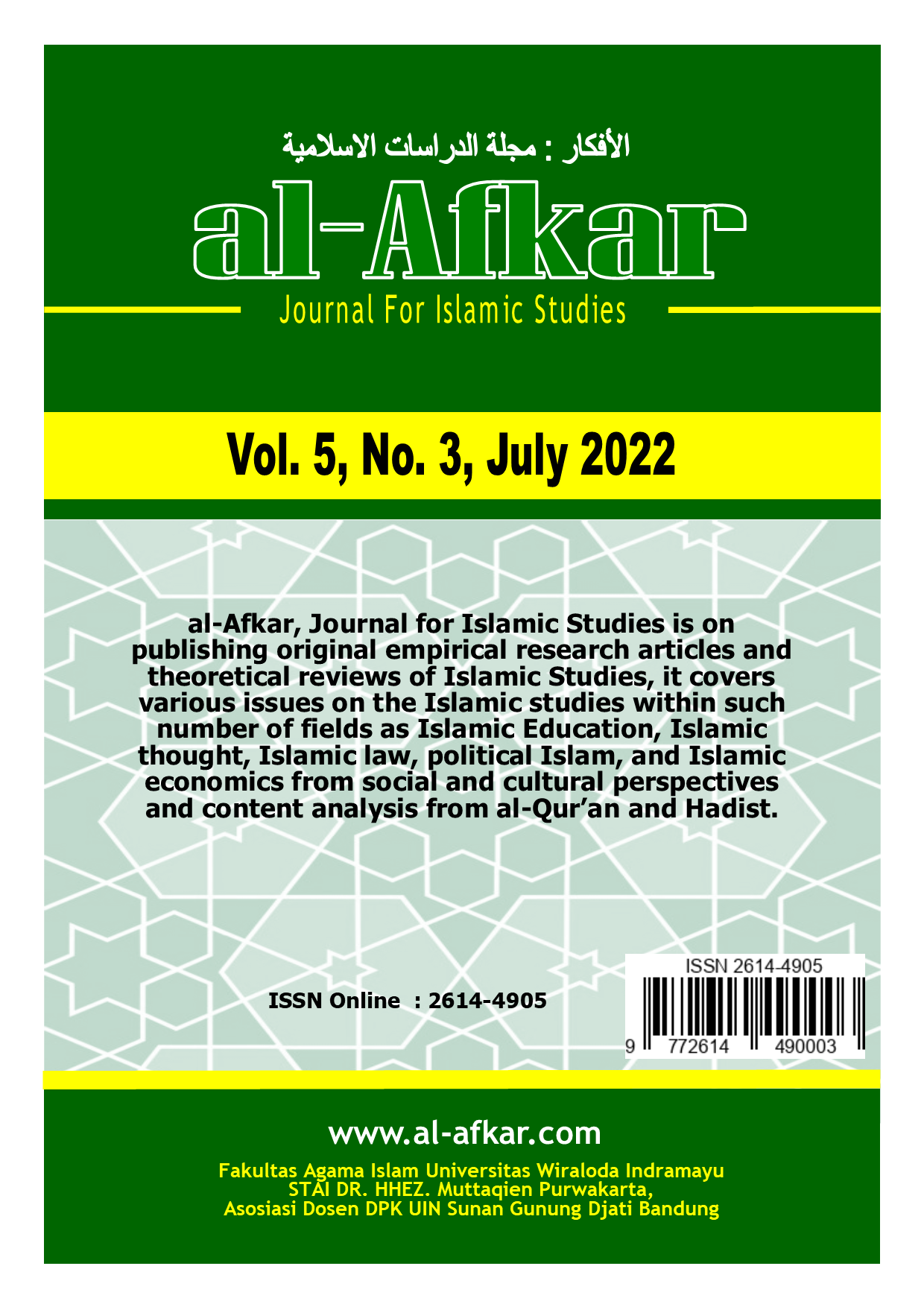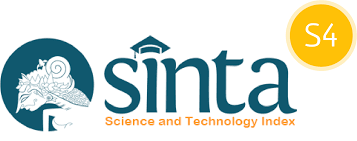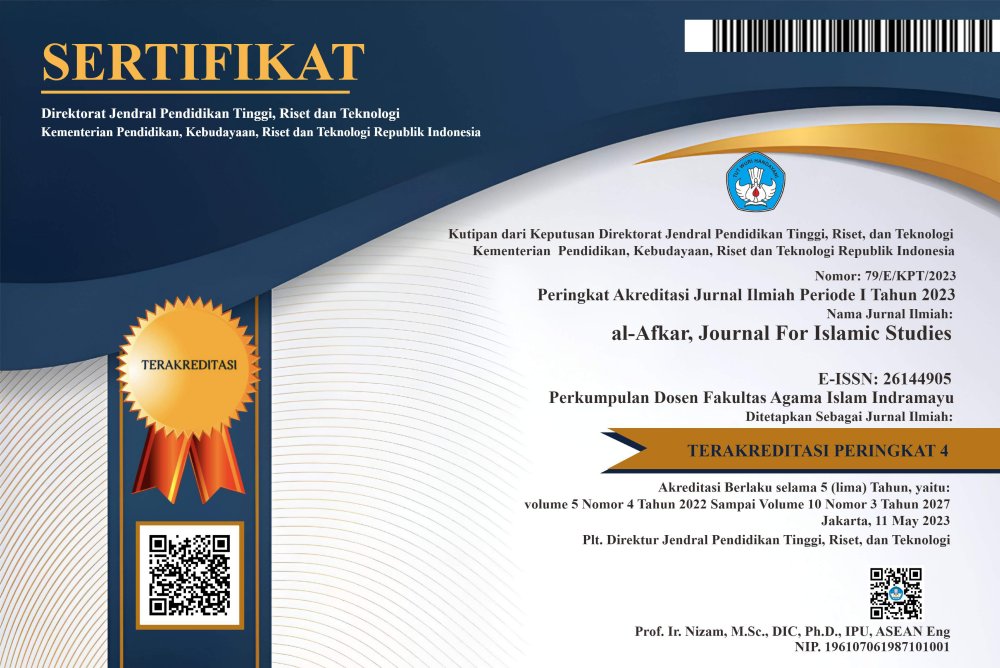PENENTUAN HARI BAIK PERNIKAHAN DENGAN MENGGUNAKAN TATAL DALAM PERSPEKTIF SOSIOLOGI
DOI:
https://doi.org/10.31943/afkarjournal.v5i3.310Keywords:
Rasinoal Acts, Marriage, Javanese Tatal, Determining the Good Day of MarriageAbstract
Marriage is a sacred bond between a man and a woman, when it is said Ijab Qabul means the marriage is valid and ready to enter a new level of life (household). One of the Javanese customs that is carried out before the wedding is to determine or look for the lucky day of Weton or Neptu for the bride and groom based on Javanese Primbon. The determination of the wedding day is based on the traditions found in the Nglebeng Village community. In this study, we will discuss how the process of determining the wedding day is carried out in Nglebeng Village using Weton calculations and using Javanese Sholichin tatal. Javanese Tatal is a formula to find out what day, wuku and month it is permissible and appropriate to carry out a wedding celebration. Researchers used qualitative research methods and case study approaches. This study uses Max Weber's theory, namely rational action which is included in the type of traditional action. The results of this study are that the tradition of determining the lucky day in marriage carried out by Nglebeng Village residents is a habit carried out by the local community before the marriage contract.
Downloads
References
Amin, Darori. 2000. Islam Dan Kebudayaan Jawa. Yogyakarta: Gama Media.
Hariwijaya, M. 2005. Perkawinan Adat Jawa. Yogyakarta: Hanggar Keraton.
Jauhari, M. Y. 2020. “Tinjauan Hukum Islam Terhadap Tradisi Menghitung Weton Sebagai Acuan Dalam Pernikahan (Studi Kasus Desa Pundenrejo Kecamatan Tayu Kabupaten Pati) (Doctoral Dissertation, IAIN KUDUS).”
Listyana, Rohmaul, and Yudi Hartono. 2015. “Persepsi Dan Sikap Masyarakat Terhadap Penanggalan Jawa Dalam Penentuan Waktu Pernikahan.” Jurnal Agastya 5 (1): 118–38.
Oktarina, Lindha Pradhipti, Mahendra Wijaya, and Argyo Demartoto. 2015. “Pemaknaan Perkawinan (Studi Kasus Pada Perempuan Lajang Yang Bekerja Di Kecamatan Bulukerto Kabupaten Wonogiri).” Jurnal Analisa Sosiologi 4 (1): 75–90.
Oktiasasi, Atiek Walidaini, and Sugeng Harianto. 2016. “Perhitungan Hari Baik Dalam Pernikahan (Studi Fenomenologi Pada Keluarga Muhammadiyah Pedesaan Di Kecamatan Kertosono Kabupaten Nganjuk).” Paradigma 4 (3): 1–10.
Paul, Doyle Johnson. 1986. Teori Sosiologi Klasik Dan Modern. Jakarta: PT Gramedia.
Ruslan, Idrus, Yuni Kartika, Fatonah, and Siti Huzaimah. 2021. “Tradisi Ritual Dalam Pernikahan Islam Jawa (Studi Di Desa Kalidadi Lampung Tengah).” Analisis : Jurnal Studi Keislaman 21 (1): 1–16.
Setiadi, David, and Aritsya Imswatama. 2017. “Pola Bilangan Matematis Perhitungan Weton Dalam Tradisi Jawa Dan Sunda.” Jurnal Adhum 7 (2): 75–85.
Syamsuri, and Ilham Effendy. 2021. “Penentuan Hari Pernikahan Menggunakan Primbon Dari Sisi Istihsan.” HAKAM: Jurnal Kajian Hukum Islam Dan Hukum Ekonomi Islam 5 (1).
Trihantoro, Wahyu, Lusi Asa Akhrani, and Intan Rahmawati. 2016. “Makna Pernikahan Pada Perempuan Korban Kekerasan Dalam Rumah Tangga.”
Wahib, K. 2019. “Analisis Peranan Dan Pandangan Sesepuh Tentang Praktek Perhitungan Weton Sebelum Pernikahan (Di Desa Raci Kecamatan Batangan Kabupaten Pati) (Doctoral Dissertation, IAIN KUDUS).”
Wiyasa, Thomas Bratawijaya. 2006. Upacara Perkawinan Adat Jawa. Jakarta: Pustaka Sinar Harapan.
Downloads
Published
How to Cite
Issue
Section
License
Copyright (c) 2022 Zulfa Miftahu Rohmah, Ahmad Nurcholis

This work is licensed under a Creative Commons Attribution 4.0 International License.



















